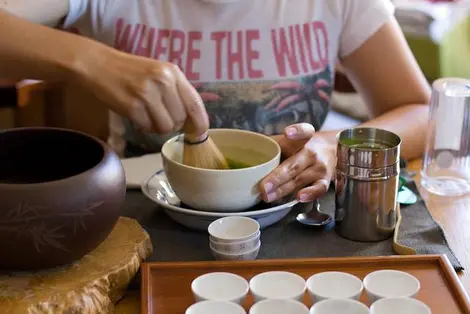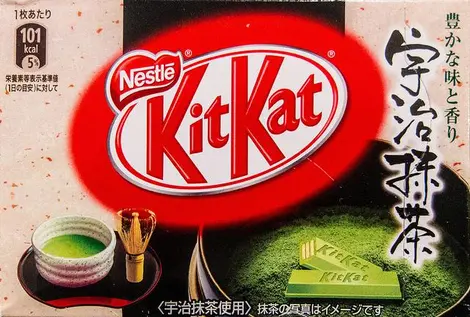Matcha tea 抹茶
Green Giant
Does matcha tea need any introduction? This Japanese green tea, ground to a fine green powder full of flavor and energy, has already amassed thousands of fans worldwide. In Japan, it is a beverage consumed in the purest tradition, following a very formal ritual, and has been for many years. Today, to our delight, it can be found everywhere.
Everyone thinks they know about tea. But do you know, for example, which tree the leaves we infuse in hot water for this delicious drink come from? It's a tree called Camellia Sinensis, which comes from Yunnan Province in China.
Another question: black tea and green tea - do you know the difference? They both come from the same tree, and they're the same leaves. It's the drying method that makes them different. Unlike black tea leaves, which are harvested at maturity, dried naturally and oxidised, green tea leaves are dried quickly after harvest.
For Japanese green tea, the drying technique used is steam. Subjecting the leaves to steam for thirty seconds stops oxidation and means the leaves keep their beautiful green color and fresh aroma.
Tea and Japan
Tea was introduced in Japan around the 8th century by Buddhist monks from China. First used as a stimulant during long meditation sessions, it was quickly adopted by the powerful and peasants alike. Japanese tea then evolved from the Chinese model to develop its unique taste and delicious bitterness. Traditional Japanese green tea is called sencha (煎茶).
How do you get matcha?
For matcha, you must first produce gyokuro (玉楼), a deep green sencha tea with leaves that have been deprived of sunlight until right before harvesting. This allows the tree to accumulate amino acids in the leaves, which gives the tea a certain sweetness and a "grassy" appearance. The best gyokuro comes from the Uji region (宇治) near Kyoto. The gyokuro is then ground between stones until it becomes a very fine powder, of a mesmerizing green.
Tea Ceremony
In the 16th century Sen no Rikyu (千利休), monk and master of tea, formulated the principles of chanoyu (茶の湯) or Sado (茶道), the famous Japanese tea ceremony. In Oyamazaki, south of Kyoto, you can find the temple where the monk was a disciple, and where he now lies.
Matcha everywhere
Today, it's hardly traditional, but to our delight, matcha - a victim of its international success - has become the trendy ingredient to add to all kinds of foods.
Explore the city of Uji eating a soft-serve matcha ice cream. Pop into a cake shop or cafe for a delicious matcha cake, or a matcha eclair. Need we even mention the matcha latte, seen on the menu of so many cafes today?
In Japan, you can find a variety of amazing green tea flavored sweets and cakes in konbini and supermarkets, the most famous probably being the matcha Kit-Kat.





















